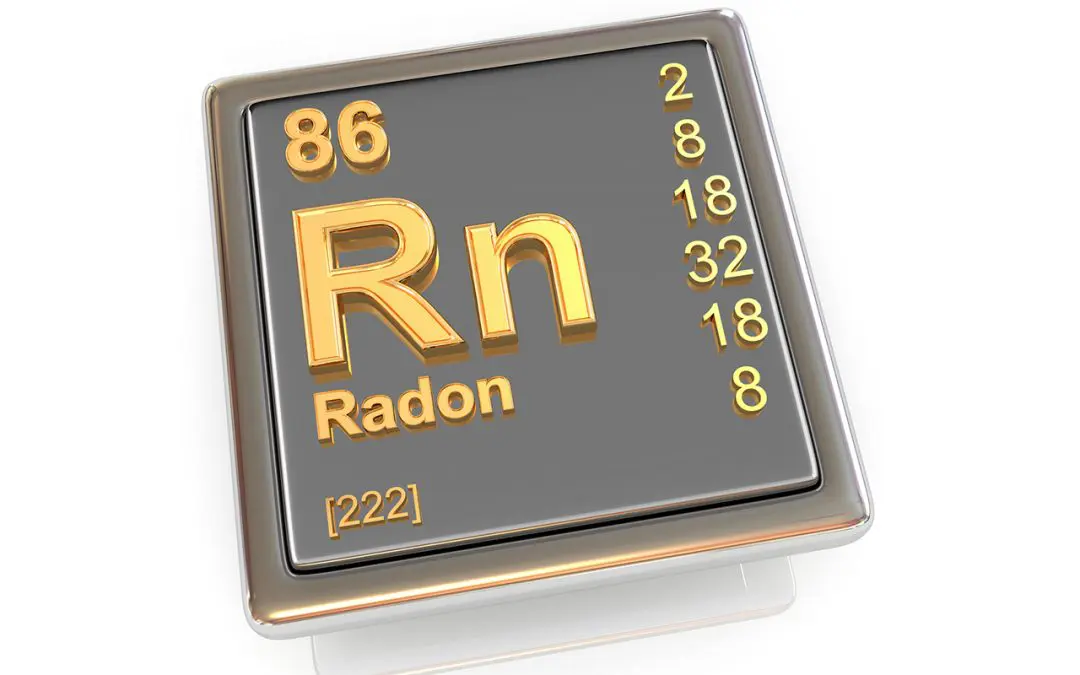You can’t see radon enter your home, yet it may still be present in high levels that are dangerous to you and your family. This radioactive gas can cause serious health problems including lung cancer. Radon risks in the home can only be detected through professional radon testing. If unsafe levels are found, you can protect your family by having the radon mitigated.
Radon Defined
Radon is a naturally occurring gas with no scent, taste, or appearance. It forms when the radioactive metals of radium, thorium, or uranium break down in groundwater, rocks, or soil. While some areas of the United States have higher levels of the gas, radon exists and is a problem in every state throughout the country.
Radon Risks in Your Home
Since the earth naturally produces radon, people get exposed to it in nature. Outdoors, radon is not a threat because it is not trapped in a small area at high concentrations. When it enters the home and circulates within a confined space, radon causes an indoor air quality problem. According to the Environmental Protection Agency (EPA), radon enters buildings in nine main ways:
- Construction joints
- Exterior air vents
- Fireplaces and/or furnaces
- Flooring and wall cracks
- Gaps and spaces in suspended floors
- Gaps and spaces around service pipes
- Groundwater supplies
- Interior wall cavities
- Gaps or spaces around pipes running into the foundation
- When warm air rises from the basement
Long-term exposure to radon indoors is proven to be linked to lung cancer. Radon exposure ranks as the second leading cause of lung cancer in the United States after cigarettes. Radon gas exposure is the most common cause of lung cancer in non-smokers. In the US alone, 21,000 people die annually from radon-related lung cancer. People who smoke or used to smoke have an even greater chance of developing lung cancer if they are exposed to radon.
Radon in Soil and Water
Radon occurs naturally in all soil, but in the US it’s more prevalent in the Northeast, the northern plains, the Midwest, and southern Appalachia. These geographic regions are known to have unsafe levels above four picocuries per liter (pCi/L). Under normal circumstances, the air pressure inside a structure has lower air pressure than that of the outside soil or soil under the foundation. This pressure difference creates suction which pulls the radon into the home through the cracks and vents listed above.
Some drinking water that comes from groundwater sources, such as wells, or underground aquifers, contains radon. Radon present in well water can escape into your home during the course of the day while using water for cooking, drinking, showering, and washing dishes.
Have Your Home Tested for Radon
With all these opportunities for radon to enter your home, it’s not surprising that one in 15 US homes experiences high radon levels. It’s important for each home to undergo its own testing to determine radon risks in the home because levels can vary vastly even between adjacent homes. The increased porosity of soil around a newly built home increases the opportunities for radon gas to enter the home. You can easily have your home tested for radon by a professional home inspector to determine risk levels.
Mitigating Radon Risks in the Home
If your levels exceed four picocuries per liter, you’ll need to have a radon mitigation system installed. The removal system, known as a soil-suction radon reduction system, vents radon gas beneath the building outside. It’s possible to remove up to 99 percent of the radon present in a structure. These devices require installation by a certified radon remediation service or radon mitigation specialist. They can also seal the cracks allowing entry into your home. You should re-test your home for radon at future intervals to monitor the results of the mitigation system.
HomeVantage Home Inspections provides radon testing and other home inspection services to northern New Jersey. Contact us to schedule your appointment.

